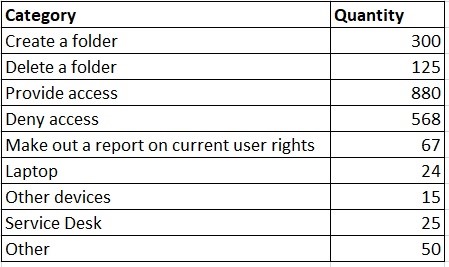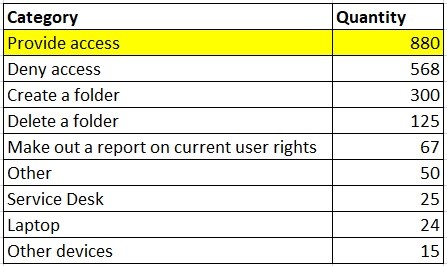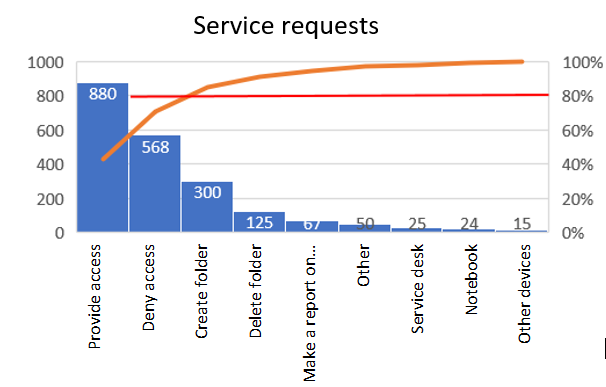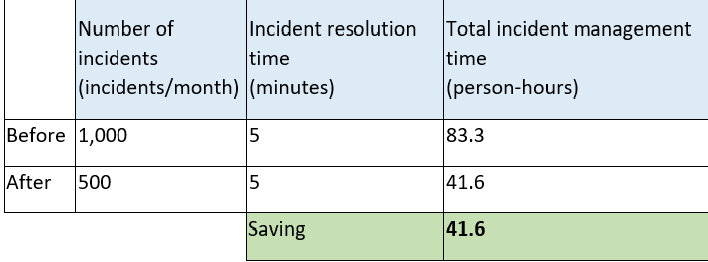Готово!
Скоро материал придет на указанную электронную почту. Также подписывайте на нас в Facebook
Ok
How Can Lean Practices Help to Optimize Work of Technical Support?
The compliance with the contractual SLA is believed to result in the high level of customer satisfaction. Yet, an opposite situation has become increasingly frequent: the service is provided in accordance with the agreement, but the customer is dissatisfied, citing innovation and improvement.
To this end, ICL Services uses Lean manufacturing practices, focused on creating value for the customer, continuous quality improvement of the provided services, and elimination of waste.
Lean Methodology Principles Applied at ICL Services
1. Involve each employee in the company’s business operations, in the continuous improvement process, all the while providing the environment of trust and transparency. As an example: the managers show their involvement in the improvements, personal and team goals are set collectively, conforming to the customer needs.2. Learn from experience, completing real-world tasks, together with your colleagues. Acknowledge your achievements and learn from your mistakes. Share expertise and best practices.
3. Standardize, document current best practices as standards and keep them up to date.
4. Understand customer needs, select team performance indicators which reflect customer requests. Make the employees aware of the value they create for the customer.
5. Visualize, bring the invisible into view. Focus the team’s attention on the aspects of the service which are important to the customers. Visualize the results of teamwork and promptly register any deviations from the process.
6. Eliminate waste of time and resources in the activities performed. Increase customer satisfaction by eliminating those process steps of the service for which he is not willing to pay.
7. Measure the workflow performance. Focus on those performance indicators which are within the team’s reach. See the direct connection between the customer needs and the performance results.
One may claim that the continuous improvement culture is truly being instilled and maintained only while adhering to these principles in one’s work on a daily basis.
ICL Services actively uses Lean principles in the work of the technical support, which helps to improve the quality of the support team work and increase customer satisfaction. Further I will provide three scenarios of using Lean practices and, using the completed cases as examples, describe the workflow and the results that have been achieved.
In the preface, I must note that all the scenarios share a number of constants:
1) we review the work of the first-line or the second-line support, 2) we suppose that there is an ITSM system, and 3) we believe that query statistics can be exported from it, which includes incidents and service requests.
I must also point out that the provided cases belong to the IT services field, but the key aspects of the article can be applied to other business areas.
Scenario No.1: «Reducing the Number of Routine Tasks».
Background: Service requests submitted to the second line of support generate a stream of routine and repetitive tasks. The specialists spend a significant part of their working time on managing them. This workflow needs streamlining.Supporting principles: visualize, involve everyone and measure the performance.
Action plan:
1. Compile the statistics on service requests: categorize and sort the data according to the number of requests in each category.
2. Together with the team, deliberate on how managing the categories with the largest number of requests can be optimized.
3. The solutions generated in the course of the discussion are constantly displayed in a place accessible to the team, and their implementation is monitored during regular meetings.
An example, illustrated:
1. Compress the data exported from the ITSM into a simple table

2. Categorize the requests

3. Sort the categories by number of requests. Reveal that the «Provide Access» category is at the top. Start the improvements from this category.

4. Here is the same table but as a Pareto chart, which can be quickly created in Excel.

With the help of the chart, those 20% of categories that contain 80% of requests are easily identifiable. In our case, the «Provide Access» and «Deny Access» categories are worth addressing.
Results:
— we understand which routine tasks need to be automated first;
— we identify the requests which can be potentially delegated to the first-line support. If this step is feasible, the team can reallocate some of the routine tasks and make time for further service improvement;
— maximum team engagement facilitates finding new areas for optimization and improvement;
— visualizing the scope of incoming requests, for example, in the form of tables and charts, helps to quickly identify the starting point for improvements.
The completed case: Improved Categorization of Requests
In the course of the incoming requests analysis, the «Other» category was the top-ranking one. The team has thoroughly reviewed the makeup of the category and the reasons the requests were referred to that group. As a result, a new category for similar requests has been introduced. To manage these requests faster, the team has developed an instruction for the first-line support for processing tickets without involving the second-line support. The «Other» category has decreased by 85%, which has reduced the teamwork time required for managing the requests within this category.
Scenario No.2: «Improving the Service»
Background: Incidents constitute the major part of requests submitted to the first and the second lines of support. It is necessary to identify the common causes of incidents and set up proactive work to eliminate them.Underpinning principles: learn from experience, measure the performance.
Action plan:
1. Compile the statistics on incidents. As in the first scenario, identify the most popular category.
2. Determine what is needed to be done in order to eliminate the entire category or reduce the number of incidents in it.
3. If there are no obvious solutions aimed at reducing the number of incidents, look into this issue during the problem solving session, which is one more Lean tool.
4. Document the solutions, breaking them down into specific tasks: who does what and within what time limit. Then monitor the status of tasks and the change in the number of incoming incidents. If the solutions are effective, the number of incidents will decrease.
Results:
— The team frees up time for other tasks by reducing the number of incoming incidents.
— Identifying the common cause of a group of incidents helps to prevent these incidents from occurring in the future, which has a positive impact on the users’ assessment of the service quality: «it’s nice when nothing needs fixing».
— When the employees, who deal with incidents first-hand, are involved in active measures to reduce their number, it helps to find the solutions faster. Getting in tune with continuous improvement, the team can set increasingly challenging goals: for instance, to reduce the number of incoming incidents by 10% annually (then by 15%, 20%, etc.)!
The completed case: Reducing the Routine Tasks
The second-line support team analysed a stack of monitoring incidents. The following categories entered the top three:
1. High CPU load — 600 incidents/month.
2. High RAM usage — 350 incidents/month.
3. Not enough of HDD space — 50 incidents/month.
On average, it took 5 minutes to process one ticket in these categories.
The team has taken a number of active measures to identify the root causes of these incidents. In particular, a program script has been written which identified the process causing high load on CPU and memory during downtime. Over 3 months, in the course of all measures, the number of incidents has decreased by half, which has freed up 40 hours per month for the team.

Scenario No.3: «Doing More for the Customer»
Background: Incidents and service requests submitted to all support lines take significant time to process and resolve. This process needs accelerating.Underpinning principles: eliminate waste, standardize, understand customer needs
Action plan:
1. As before, the first step is compiling the statistics.
2. In those categories where the number of requests cannot be reduced, look into accelerating the request management. In this case, a detailed workflow walk-through for each request type can be beneficial. For instance, reviewing the steps of providing access to folders involves identifying the bottlenecks and losses in the process, as well as finding the solution to the problem of how the process can be accelerated.
3. If the team doesn’t have those yet, develop the standards describing the best current practices. For example, the most efficient and correct way to provide access to folders. If the standards already exist, update them progressively as the team accumulates new knowledge.
Results:
— revealing the ineffective stages of request management results in reduced processing time;
— identifying the opportunities for «shift left»: reallocating the request processing from the second line to the first line, and from the first line even closer to the customer via online channels and the self-service portal;
— teamwork optimization due to the standardized process of request management;
— discovering a growth area through processing requests which are not included in the list of currently provided services. For example, customer requests which can be sorted out into a separate category and included in the contractual provision of services.
The completed case: New Opportunities for the Provision of Services
In the first-line support team, the number of requests registered by phone was significantly lower than the total number of received phone calls. This could mean that not all user requests were covered by the currently provided services.
The team has analysed all incoming phone calls. It has identified new popular categories of user requests which were not included in the current contract. It has discussed with the customer the possibility of including these request categories in the current scope of provided services.
Since only registered requests were paid according to the contract, the project margin has increased by 8%. At the same time, the customers have been provided with improved services: their requests have been resolved along with other queries.
Conclusion
The described scenarios demonstrate how Lean practices help to streamline the management of incoming user requests and incidents, improve the services provided to the customer, optimize the time and financial resources and reveal new opportunities for development.You can automate the execution of the scenarios described above, customize a convenient method of data visualization (from Excel diagrams to Power BI dashboards); in addition, you can use various programs and tools for further data analysis, introducing machine learning and predictive analytics.
However, it is essential to keep in mind the key principles, which enable you to maximize the effect of these activities:
1. Vivid visualization of the team performance. Well-designed charts and diagrams enable the team to understand their current performance efficiency and identify the areas for improvement.
2. Understanding the customer needs: which aspects of teamwork provide value to the customer, and which aspects are a waste of time and resources, inefficient steps.
3. Involving the whole team in the search for solutions. It’s great when there is a convenient platform for tracking the task progress, the team learns from mistakes, and the best practices become the standards of teamwork.
Related news
- 27 April
IT services: introduction basics. Part one
Head of Business and Application services Dmitry Kashtanov writes about IT services. We publish the first part. To be continued ...
- 5 May
IT services: service formula. Part two
In this series of articles Dmitry Kashtanov writes about what kinds of services you can find in the IT field.
- 7 May
IT services. Who or what creates service utility? Part three
In this series of articles Dmitry Kashtanov writes about what kinds of services you can find in the IT field.
- 21 May
IT Services. Professional IT Services. IT outsourcing. Part four
In this series of articles Dmitry Kashtanov writes about what kinds of services you can find in the IT field.
- 22 December
Customer focus: implementation of Lean in service sector
The articles explains what Lean — Lean production approach or methodology — is and how to implement it.
- 30 October
IT service solutions to increase business efficiency
We will discuss key technologies that will help save money, support business sustainability, increase operating speed and customer satisfaction.
Stay informed
Subscribe to our newsletter and keep up with our latest news

